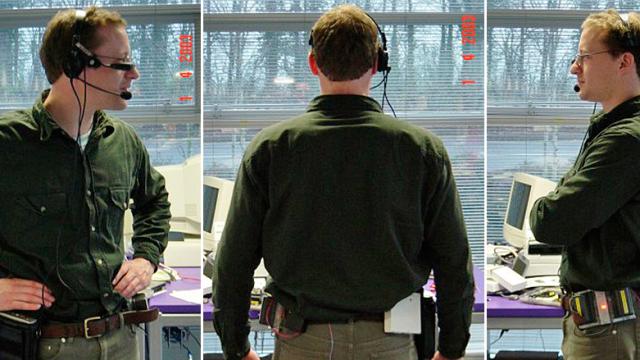Dyson’s first cyclonic vacuum cleaner was launched 21 years ago, but before it made it into consumer’s hands, the company’s research and development team went through 5,127 prototypes to perfect its design. Since then the company’s R&D lab has been responsible for some amazing products — including a few that have never seen the light of day before now.
To remain several steps ahead of its competition, Dyson recently announced a $US400 million+ investment and expansion of its R&D facilities, doubling its capabilities. And to celebrate the company’s commitment to research — which is usually a closely guarded secret, protected by biometric security and secret code names — Dyson has decided to reveal three of its creations that never made it past the prototype stages.
A 13-Year-Old Precursor To Google Glass
The name Dyson has become synonymous with vacuum cleaners, fans, hand dryers, and other household appliances. But like Google, the company stepped outside its comfort zone back in 2001 and started development of an augmented reality headset computer featuring a similar heads-up display to Glass — except Dyson’s was in 3D.
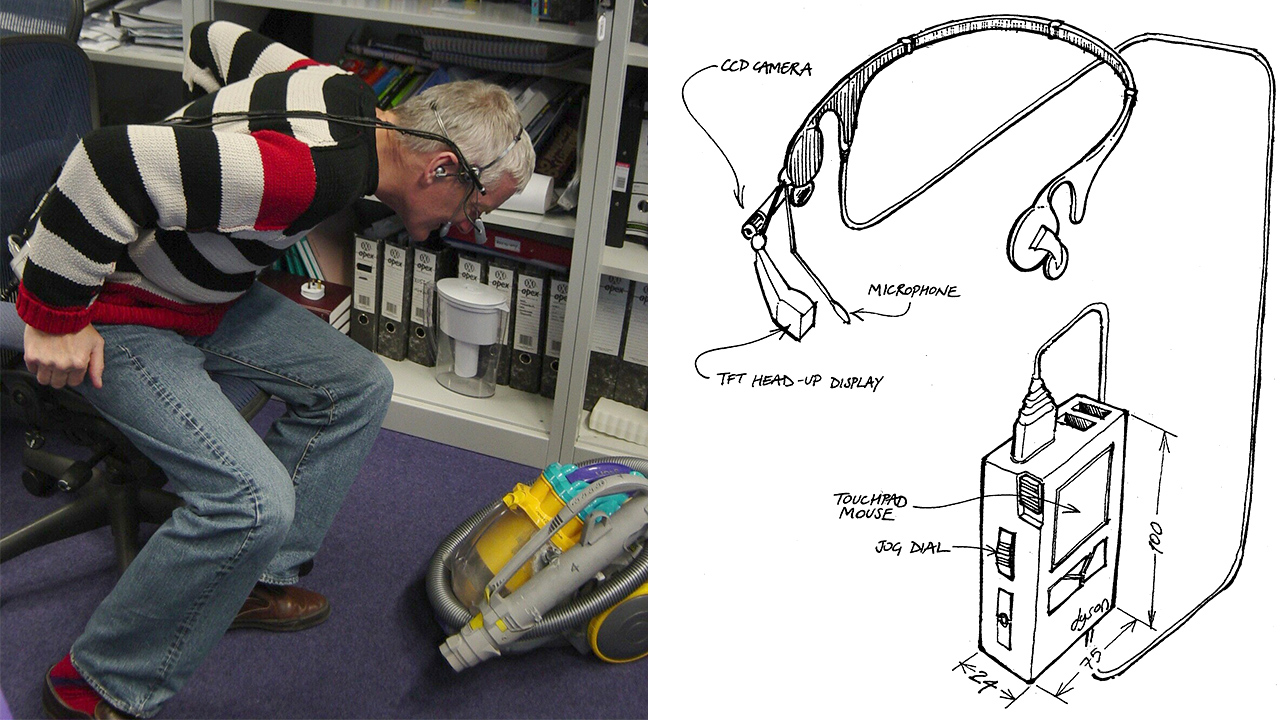
Code-named the N066, but more commonly known as the Dyson Halo, the device was a full-on wearable computer that would have actually had far more functionality than Glass, but at the cost of having to carry an iPod-sized accessory housing the processor, memory, and battery.
What did you get for that added inconvenience? While at home or at the office, the Halo could be docked to a monitor, keyboard, and mouse, and used as a full-on desktop computer. So it was envisioned as being far more than just a mobile communicator.
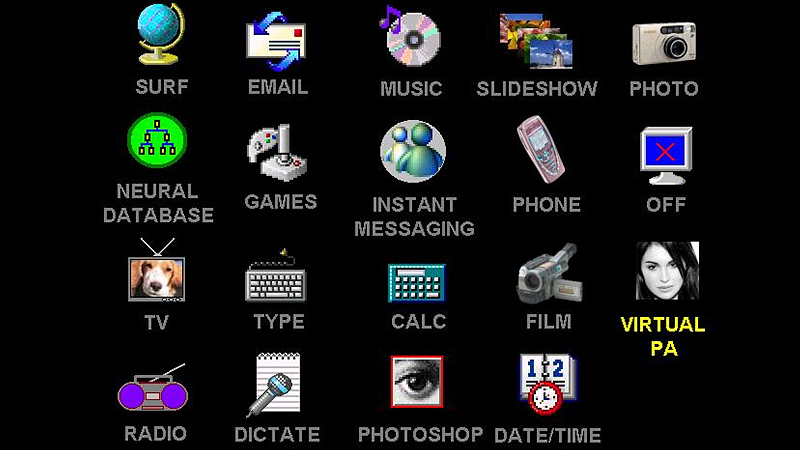
Instead of a tiny mobile display sitting perched in front of your right eye, the Dyson Halo looked and worked more like a traditional pair of glasses. The headset featured two angled mirrors which reflected images from a pair of tiny displays sitting near the wearer’s temples. The effect created the illusion of a 10-inch 3D display floating a few feet in front of you, and like PDAs of the past — and even today’s smartphones — users were presented with a grid of icons activating various apps. (Including, apparently Photoshop?)
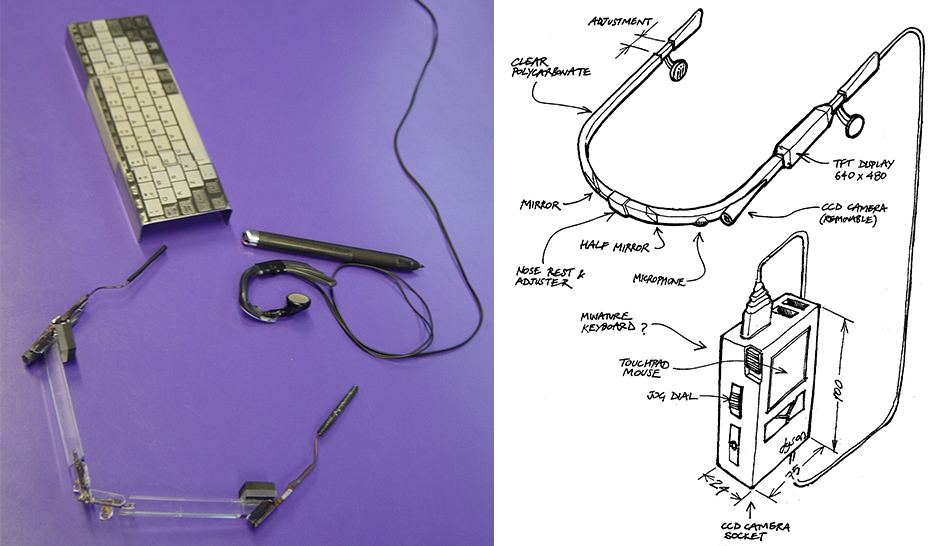
Basic voice commands and text-to-speech audio cues provided the wearer with a hands-free way to navigate the iOS and get notifications, but the Halo included other interesting ways to interact using one’s hands.
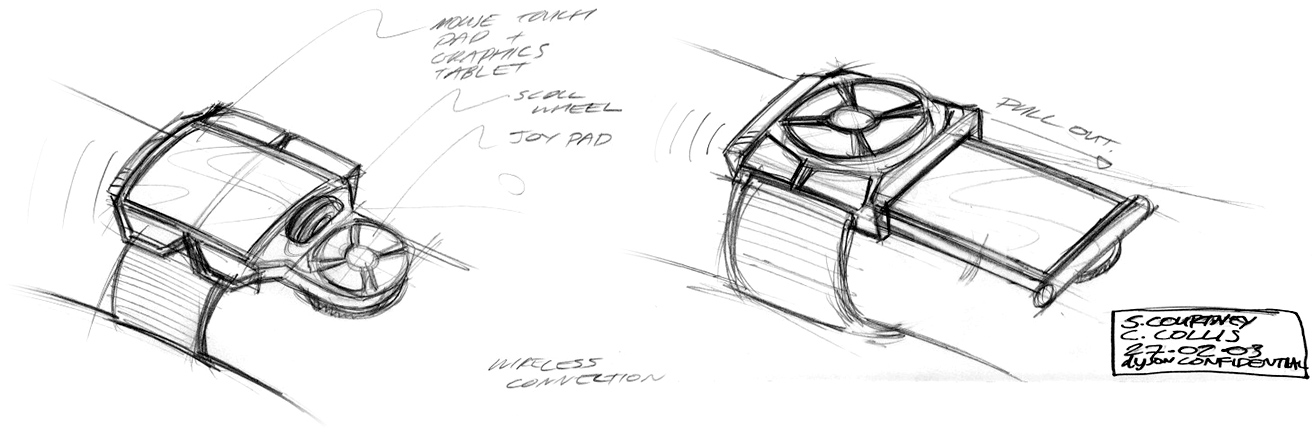
A tiny joystick, similar to the small nubs you used to find in the center of a laptop’s keyboard but worn on the wrist like a watch, allowed a cursor to be navigated around the Halo’s UI. But even more interesting was the headset’s use of a built-in solid state gyro that allowed virtual elements to be pinned to a real-world surface while the wearer’s head was moving around. This facilitated a virtual keyboard that would stay sitting on a desk at all times, and using a camera in the headset a user’s finger motions could be translated into keystrokes.
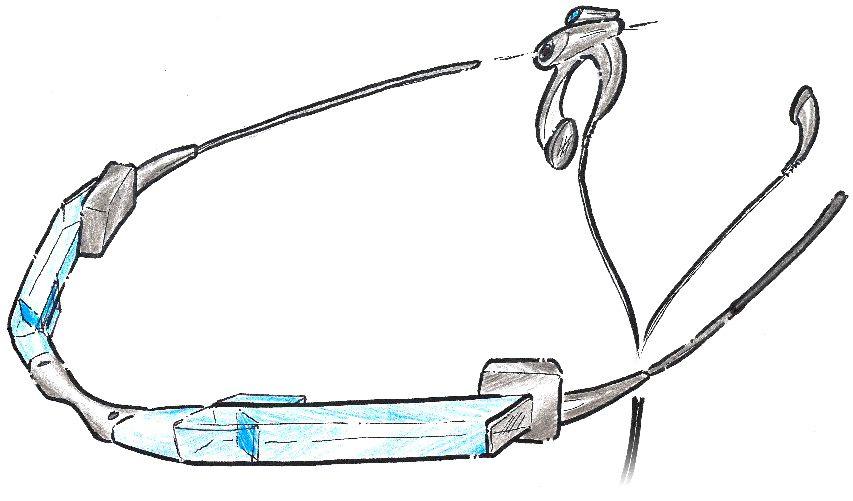
Research and development of the Dyson Halo was put on hold after three years so that the company could focus its resources on expanding its technologies into the lucrative US market. But according to the company, parts of the Halo still live on in other top-secret research projects.
Using Dyson’s Filter Technology To Clean Diesel Exhaust
Dyson’s vacuum technology isn’t just adept at sucking up pet hair. Hidden away inside that complex network of tubes and chambers are filters that are capable of trapping dust particles as small as 0.5 microns in size. The company’s engineers figured that the company’s technology could also be effective at cleaning the exhaust coming from diesel engines to help reduce air pollution.
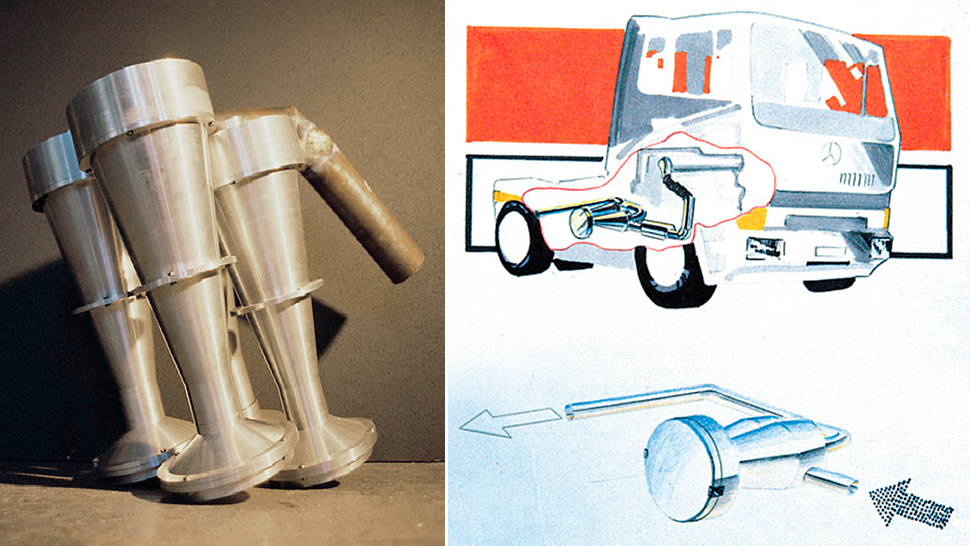
In 1997, this led to the creation of the Dyson Diesel Trap — code-named the X007 — which was more than capable of handing the 2.5 micron-sized particles that made up the exhaust from a diesel-powered vehicle.
Researchers determined early on in the X007’s development that using the same cyclone technology from Dyson’s vacuums required too much energy, increasing a vehicle’s fuel consumption. And after dabbling with a system that actually coated the particles in a thin layer of oil, the company’s engineers settled on an electrostatic system that would use an electrical discharge to ionize particles so they could be collected and burned off before becoming pollution.
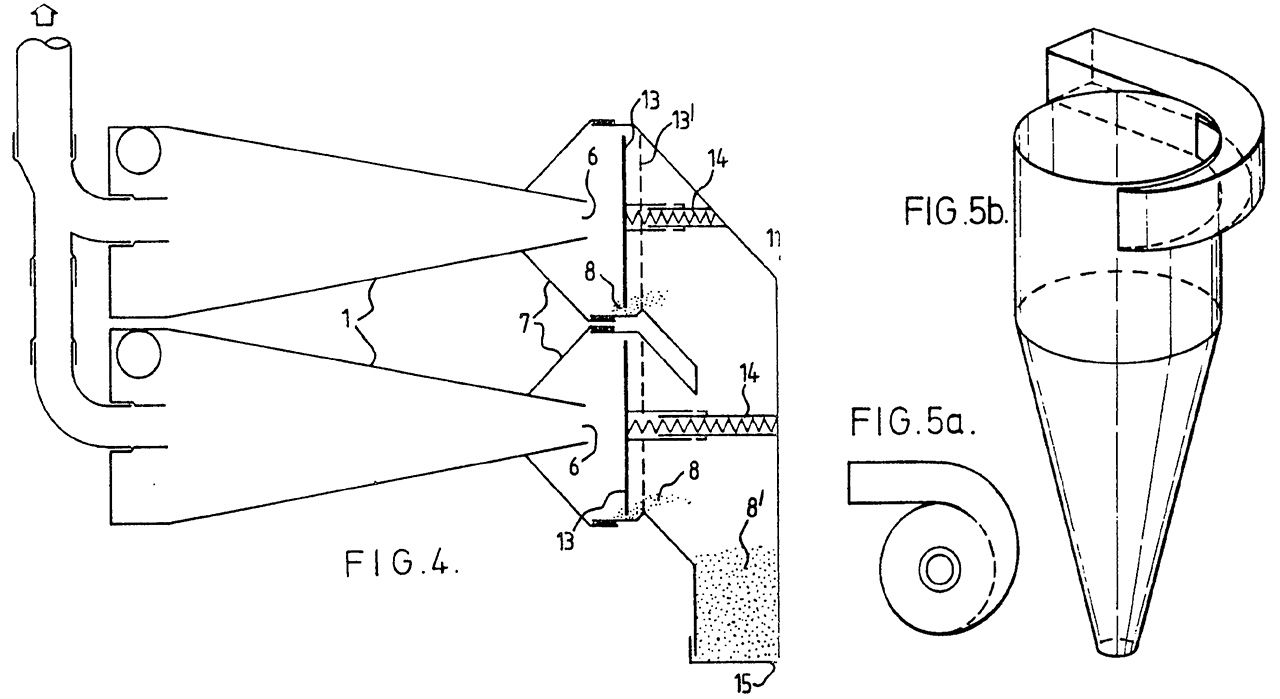
Dyson actually had no interest in selling vacuums originally, and instead wanted to licence its cyclone technology to existing vacuum makers to replace bags. But no one was interested, which eventually led the company to design and build vacuums themselves. The same thing happened with its Diesel Trap technology.
Vehicle manufacturers and diesel engine makers opted to go with less-efficient ceramic filters instead, which tend to get clogged up just like vacuum bags do. So Dyson’s diesel filter technology simply became a forgotten R&D initiative.
A Fuel-Cell-Powered Electric Motor
You’ve probably heard the term fuel cell thrown around when it comes to eco-friendly alternatives to fossil fuel-powered motors. The technology converts the chemical energy in hydrogen and oxygen to electrical energy, so in theory basic H2O is all you’d need to put in the fuel tank.
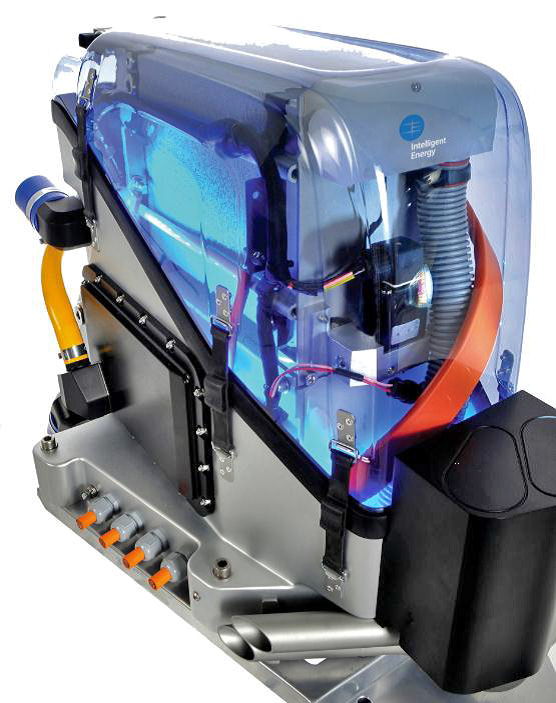
Dyson’s R&D lab tasked ten of its engineers to incorporate one of its existing electric motors into a fuel cell. And after three years they had succeeded in creating the V4HF digital motor, which was small, lightweight, had improved efficiency, started three times faster, and even boasted a 20 per cent increase in power. It sounds like a fairly incredible creation.
Thankfully, while the V4HF hasn’t officially made it into any of Dyson’s existing products, it’s still being further developed given its considerable potential.
And given the company is introducing more and more cordless products into its line, it doesn’t take much stretching of the imagination to see this technology being incorporated into compact vacuums, or other products that can benefit from not being tethered to an outlet.
What’s most tantalising is that these are just the three projects that Dyson lifted the curtain on; who knows what creations have yet to be unearthed — or if they ever will be?
